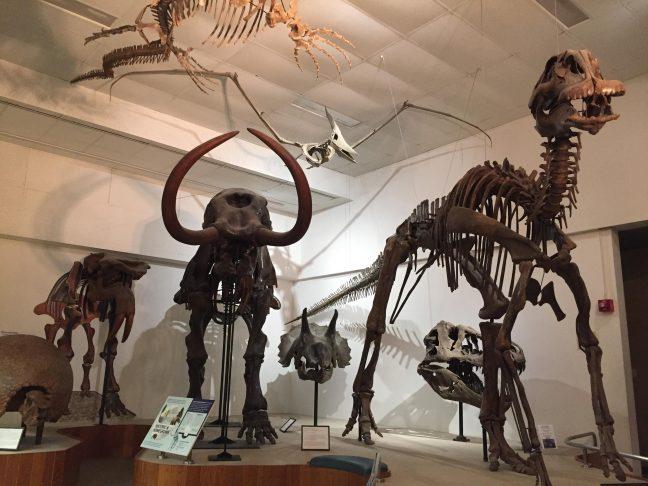UW teaching faculty member uses Niche Map program to research extinction
Teaching faculty in the University of Wisconsin Integrative Biology Department Scott Hartman spoke on how thermal modeling is an effective tool for predicting the End-Triassic Extinction period Sept. 28 at Birge Hall.
Hartman’s research focuses on the main forcing mechanism that determines what animals survive and what anatomy or physiology contributes to their survival.
Hartman began by sharing some background information for his research in the Triassic period. The Siberian Traps erupted and covered millions of miles, creating massive deserts that were hard to cross, Hartman said. Temperatures were around 40 degrees Celsius or 104 degrees Fahrenheit.
This period also included variations of modern fauna-lizards, mammals, dinosaurs and modern amphibians — these creatures were the start of many modern amphibians, Hartman said.
Institute on Aging presents new findings regarding brain health at annual colloquium
“We call them those labels now because we know how the story ends … [going back] it wouldn’t be nearly as obvious, looking at them, who the winners and losers were ultimately going to be,” Hartman said.
At the end of the Triassic period, the processes pushing the plates together started rifting. The proto-Atlantic ridge erupted, creating the Atlantic Ocean, Hartman said.
Many researchers use mechanistic thermal modeling, specifically Niche Mapper, Hartman said. This uses empirical data to measure how the organism reacts to different environments, allowing them to test causal hypotheses.
The system is composed of two main parts — the microclimate model and the biophysical model, Hartman said. The microclimate model functions based on user-inputted data for different climates. The biophysical model uses the physical dimensions of the organism and other components to simulate how the animal would react to the climates.
‘Doing your own research:’ What it means for trust in science, science institutions
By using the niche map program, Hartman said he discovered how much energy is required just to exist. Most animals had a core temp of 30 degrees Celsius. Heat stress caused them to stop foraging to find shade.
After trial and error, researchers, including Hartman, modeled the end-Triassic mass extinction which started with a cold phase due to the aerosolized sulfur in the air. This was followed by a warming period of intense heat. From this simulation, they found the transient cold stage is predictive of survivorship, while the global warming stage finished them off.
These results were tested against the largest living dragon — the Komodo dragon — which compared well with the empirical data from earlier processes.
There were a few restrictions to this study. It focused on climate-induced physiological stress and no other factors such as food scarcity or predators. Hartman said he believes there is a long way to go in research, but this is a solid start.
“[The] best lesson is how forcing mechanisms on extinctions are not always the most obvious choice,” Hartman said.


















